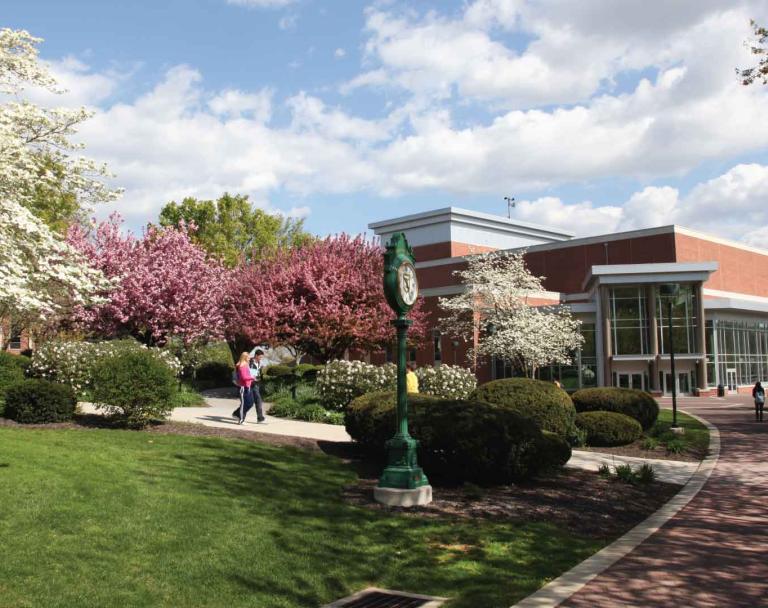Designed for Action: Bridge-Building at Ycp

Designed for Action: Bridge-Building at YCP
March 01, 2022At York College, students aren’t just reading textbooks and listening to lectures. They’re working on community projects, solving real-world problems, and using their education to effect change. In Designed for Action, we meet the students who are making an impact outside the classroom.
When you walk across a bridge, you want to be confident the engineers who designed it knew what they were doing. Your safety is in their hands. What does it take to get it right? York College Civil Engineering majors can tell you.
Students in Professor Scott Hamilton’s Statics class took on this real-world problem and applied their skills and knowledge to design a pedestrian bridge—the Mill River Greenway Pedestrian Bridge—to span an 88-foot gap in a park. The problem simulated a real project and the class broke into groups to design the specifics of the bridge, including member dimensions, material, and aesthetics.
“This was the first time that I was given the opportunity to design a realistic final product based only on a list of criteria and client wishes, which I feel was a great real-world application,” says Jasmine Weaver ’24. “Working in a group on a project like this is something that I will most likely experience many times in my career, so this project was very beneficial.”
Eric Andrews ’24 says, “I keep saying phrases like ‘our work’ and ‘our project’ and that is because we worked in teams of four…having collaboration skills is extremely valuable in almost any field, and engineering is no exception.” He agrees with Jasmine that the project will help his career path. “The work involved us solving this problem using the engineering design process, which included brainstorming, calculations, and models.”
There are always challenges when working on a group project, especially when it comes to dividing work and making decisions together. Jasmine says her group had some calculation errors “that set us back, but luckily we caught and corrected them.” She adds, “Sometimes we struggled in the beginning with the division of work and time management, but we were able to produce a successful final product.”
Eric’s group ran into some “big, technical challenges; from getting the stringers lined up correctly, to selecting the right material for the beams.” He believes they handled these setbacks really well. “We took a step back, simplified the problem, and cleared any confusions with the work.” They had a group discussion of different ideas and different designs to solve the problem. In Eric’s opinion, problem-solving is a concept important for a career in engineering, and one he values.
Students enjoyed taking ownership of the project and are proud of what they accomplished. Jasmine takes pride especially in the cost and aesthetics of her group’s final bridge design. “We were able to keep the cost relatively low compared to other groups in our class, while also producing a safe bridge that fit the aesthetics of the park environment.” She is also proud of their class presentation and thinks that it stood out thanks to the engaging slideshow they created.
Eric is most proud of “how we worked together as a team.” They worked well together for the whole project, but each person also “did something a little bit different so they could focus and master it. This really helped us get quality work in a short amount of time.”
“This project will definitely help me in my career path as I enter the workforce of Civil Engineering,” Jasmine says. “Overall, this project gave all the students in Statics an opportunity to take on a real-world problem and apply skills and knowledge.”
Categories
